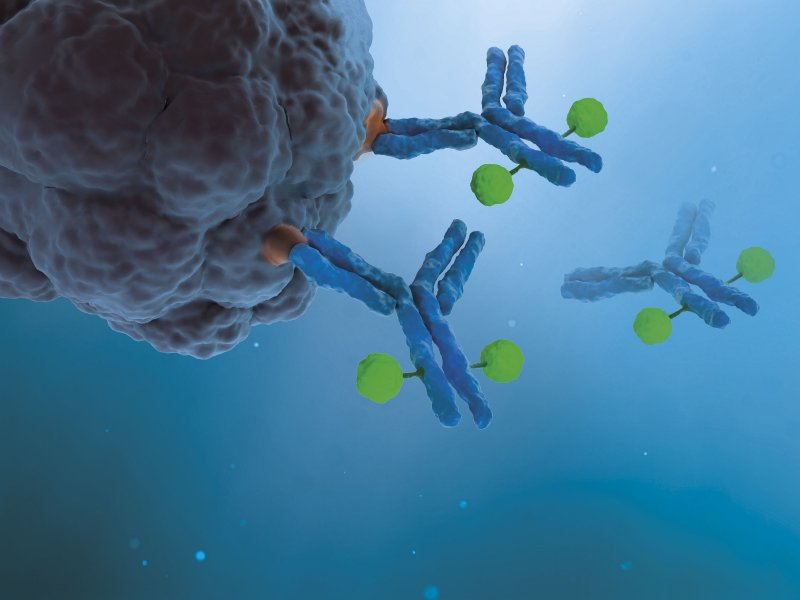Antibody-Drug Conjugates Technology
Antibody-drug conjugates (ADCs) are one of the most actively pursued therapeutic classes in oncology due to their high specificity and potency. The conjugates have two components: an antibody allowing the delivery of drug to tumors in a highly targeted manner, and a potent cytotoxic agent to directly kill tumor cells.
Despite the high degree of specificity and potency for ADCs, there are continued challenges that limit their success:
- Narrow therapeutic windows limit dose levels that can be delivered and often result in toxic effects prior to peak efficacious doses
- Limited control over conjugation of the toxin can lead to heterogeneity which results in pharmacokinetic and efficacy issues that hinder clinical development
- Unstable linkers result in leakage of the toxin during circulation
SOTIO has four ongoing partnerships for the development of its ADC pipeline. It is developing two ADCs in partnership with NBE-Therapeutics (NBE) based on NBE’s proprietary site-specific sortase mediated antibody coupling (SMAC) conjugation platform. These ADCs utilize an anthracycline toxin called PNU, a highly potent cytotoxic agent, that leads to immunogenic cell death and elicits a long-lasting anti-tumor immune response.
The therapeutics have been designed to address the limitations of current ADCs:
- In preclinical studies, these demonstrated a long half-life with a broad therapeutic window resulting in efficacy at concentrations much lower than doses where toxicity was observed
- The SMAC conjugation platform creates homogenous ADCs that have a high yield in the conjugation process and potentially high efficacy
- The linker chemistry delivers a stable product limiting toxin leakage during circulation
In November 2021, SOTIO and LigaChem Biosciences (formerly LegoChem, LCB) entered into a multi-target exclusive collaboration and license agreement under which SOTIO obtained the rights to deploy LCB’s ADC conjugation technology, ConjuAll™, and potent linker-payload platform for up to five therapeutic programs.
SOTIO also entered a license and option agreement with Synaffix B.V., a Lonza company, in October 2023, enabling SOTIO to combine its proprietary antibodies with Synaffix’s GlycoConnect®, HydraSpace®, and potent linker-payload platforms to research, develop, manufacture and commercialize ADC products.
In July 2024, SOTIO and Biocytogen established a research collaboration and exclusive option and license agreement, granting SOTIO the option to license multiple fully human bispecific antibodies generated with Biocytogen’s proprietary RenLite® and proprietary ADC platform to develop ADCs targeting solid tumors.

